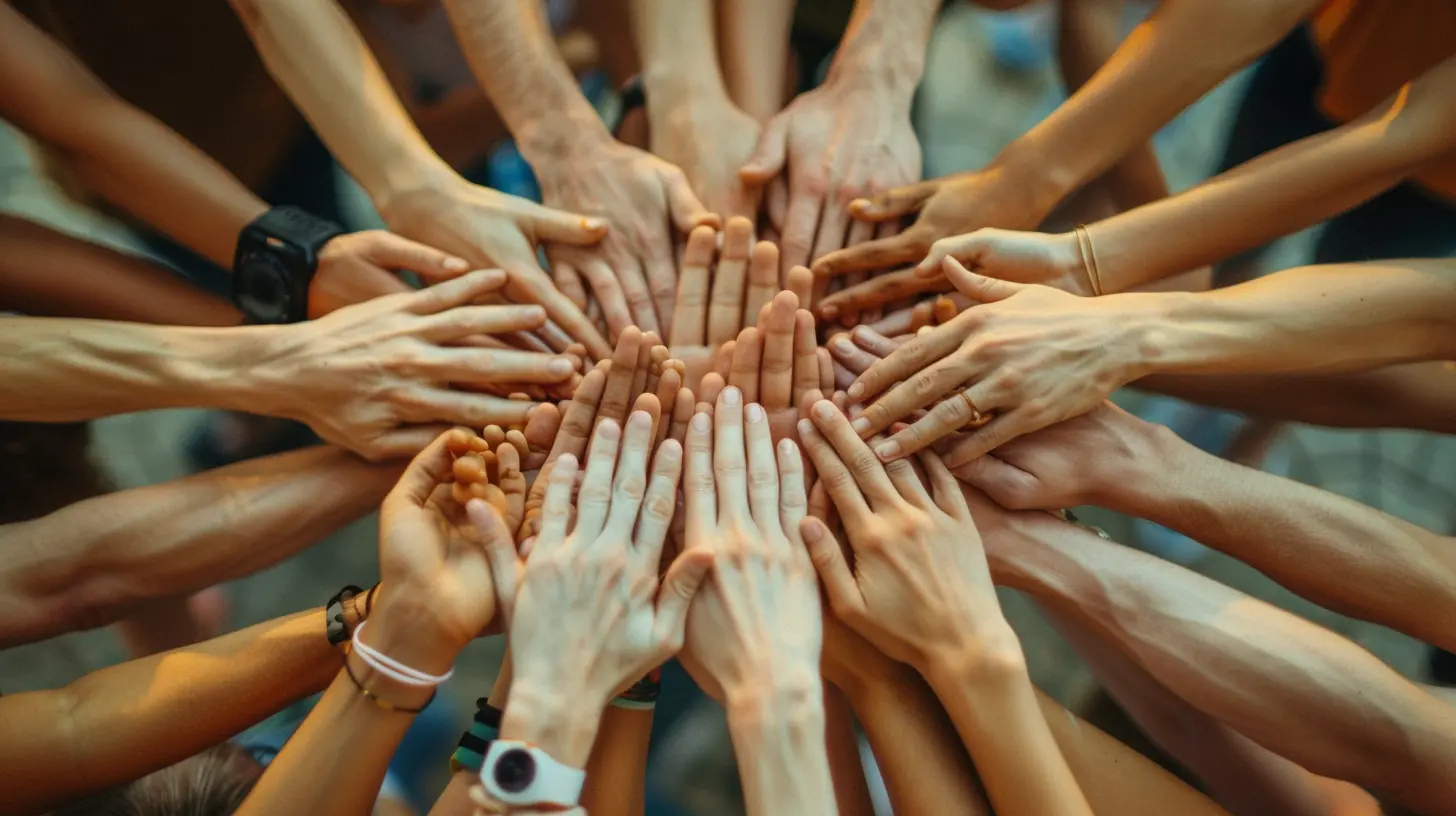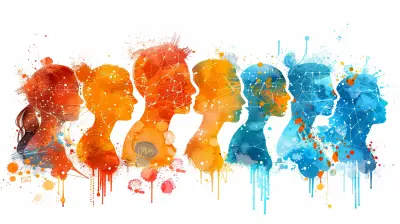How Collaborative Learning Empowers Student Voice
19 November 2025
Education isn’t just about books, lectures, and exams anymore. It’s evolving, and at the heart of this evolution is something powerful — the student voice. You’ve probably heard the term thrown around in education circles like confetti at a party. But what does it really mean?
Simply put, student voice is about giving learners a say in their education — not just in what they learn but how they learn. And one of the most effective ways to achieve this? You guessed it — collaborative learning.
Let’s break it down in a way that actually makes sense and shows you why collaborative learning is more than just a group project.
What Exactly Is Student Voice?
Student voice isn’t just about speaking up in class. It goes way deeper than that.It’s about:
- Students expressing opinions, ideas, and feedback
- Participating in decisions about their learning
- Feeling heard, valued, and respected in the classroom
Think of it as shifting the student’s role from passive listeners to active co-creators. Empowering student voice means creating a learning environment where students don’t just sit and absorb — they contribute, lead, and shape the journey.
The Problem with the Traditional Approach
Picture this: a teacher stands at the front of the classroom, delivering a lecture while students madly scribble notes. Sound familiar?That approach might have worked in the past, but today’s students crave interaction, purpose, and relevance. They don’t want to be spectators in their learning. They want to be involved.
Traditional classrooms often mute student voice with one-way communication. Students may memorize facts for a test, but they rarely get the chance to express themselves in meaningful ways.
Let’s be honest — it’s hard to feel empowered when you’re doing all the listening and none of the talking.
So, What Is Collaborative Learning?
Collaborative learning is where things get interesting.In simplest terms, it’s when students work together in groups to solve problems, complete tasks, or explore new ideas. But it’s not just about working in a group — it’s about interaction, communication, and shared responsibility.
Here’s why it rocks:
- Everyone contributes. Every student brings something to the table — their ideas, experiences, and perspectives.
- It’s real-world practice. Collaboration mirrors how teams operate in the workplace.
- It builds confidence. Students get to voice their thoughts and defend their ideas.
When done right, collaborative learning isn’t just a method — it’s a mindset.
Empowering Student Voice Through Collaboration
Now that we’ve laid down the basics, let’s dive into how collaborative learning truly empowers student voice.1. Safe Spaces for Expression
In a collaborative setting, students talk — a lot. And that’s a good thing.Working in small groups creates a less intimidating environment where students feel more comfortable sharing their thoughts than they would in a full-class discussion.
Even shy or introverted students — the ones who usually hang back — find a voice. Being part of a smaller team means their input matters, and they’re more likely to speak up.
This sense of safety encourages students to explore ideas, pose questions, and challenge assumptions — all vital components of a strong student voice.
2. Ownership of Learning
When students collaborate, they’re not just receiving information — they’re making decisions.They decide how to approach a problem, who does what, and how they’ll present their findings. This gives students a sense of ownership over their learning process.
With ownership comes empowerment. Students feel like their opinions actually make a difference — because they do.
And let’s be real: when students have a say in their learning, they care more. They’re more engaged, more motivated, and more creative.
3. Peer-to-Peer Learning and Validation
Collaborative learning isn’t a one-way street. Students aren't just expressing their own ideas — they’re actively listening to others.This back-and-forth exchange helps students learn from their peers and feel validated when their ideas are acknowledged or built upon.
Ever had someone echo or expand on your idea in a group setting? It feels great, right? That’s validation. And it fuels student voice like gasoline on a campfire.
4. Developing Critical Thinking and Communication
Powerful voices aren’t just loud — they’re thoughtful.Through group discussions, debates, and projects, students learn how to:
- Articulate their ideas clearly
- Support their opinions with evidence
- Listen actively and respectfully disagree
These are real-life skills that go way beyond the classroom.
Students who engage in collaborative learning become better thinkers and communicators. They learn how to navigate conflict, build consensus, and lead with empathy.
That’s student voice in action.
Examples of Collaborative Learning That Amplify Student Voice
Let’s ground this in reality. What does collaborative learning look like in action?Here are some classroom-tested methods that work wonders:
Think-Pair-Share
Students first think about a question independently, then pair up to discuss their ideas, and finally share with the class. This format encourages every student to participate and voice their perspective.Jigsaw Method
Each student becomes an “expert” on one part of a topic and then teaches it to their group. This not only boosts confidence but also gives students real responsibility and a platform to speak.Project-Based Learning
Students work together on complex, real-world problems, often with open-ended solutions. They choose how to tackle the project, what resources to use, and how to present their results.Project-based learning puts students in the driver’s seat and turns the classroom into a think tank.
Socratic Seminars
Students engage in thoughtful dialogue rather than a teacher-led discussion. They ask questions, refer to texts, and respond to ideas. It’s student-led, student-driven, and deeply empowering.Teacher's Role: Facilitator, Not Director
Here’s a hot take: the teacher doesn’t need to be the loudest voice in the room for effective learning to happen.In collaborative learning, the teacher becomes a facilitator — setting the stage, guiding discussions, and supporting students when needed. But the real action happens among the students.
And that’s exactly how student voice thrives. When the teacher steps back, students step up.
So instead of being the main act, think of the teacher as the director behind the scenes, while students take center stage and own the spotlight.
Challenges of Collaborative Learning (And How to Overcome Them)
Let’s not sugarcoat it — collaboration isn’t always sunshine and rainbows. Group work can be chaotic. Some students dominate, others fade into the background, and sometimes ideas clash.But hey, that’s part of the learning process.
Here are a few ways to make it work:
- Set clear expectations. Define roles and responsibilities up front.
- Model effective communication. Show students how to give feedback, listen actively, and resolve disagreements.
- Use reflective practices. Let students evaluate their own participation and that of their peers.
- Rotate roles. Make sure everyone gets a chance to lead, speak, and contribute.
With the right scaffolding, collaborative learning becomes not only manageable but transformational.
The Long-Term Impact of Empowering Student Voice
This doesn’t stop at the classroom door.When students feel empowered to speak up, make decisions, and work together effectively, it shapes who they become. They grow into confident, articulate thinkers who aren’t afraid to challenge the status quo.
They carry these skills into college, careers, and communities — becoming leaders, innovators, and changemakers.
And it all starts with giving them a voice… and a group to share it with.
Final Thoughts: Give Students a Mic — Not a Map
If we want students to thrive, we can’t just hand them a roadmap and tell them where to go. We’ve got to give them the mic and let them direct the journey.Collaborative learning isn’t just group work. It’s a platform. A stage. A practice ground where students learn how to speak up, listen empathetically, and build something meaningful together.
Because when we empower student voice, we empower future citizens — the kind who aren’t just ready for the real world but ready to shape it.
So the next time you plan a lesson, ask yourself: “Am I teaching students, or am I giving them the tools to teach themselves and each other?”
If it’s the latter — you’re not just educating. You’re empowering.
all images in this post were generated using AI tools
Category:
CollaborationAuthor:

Bethany Hudson

